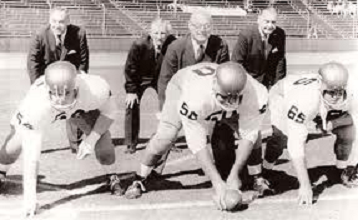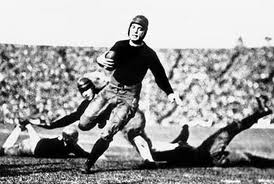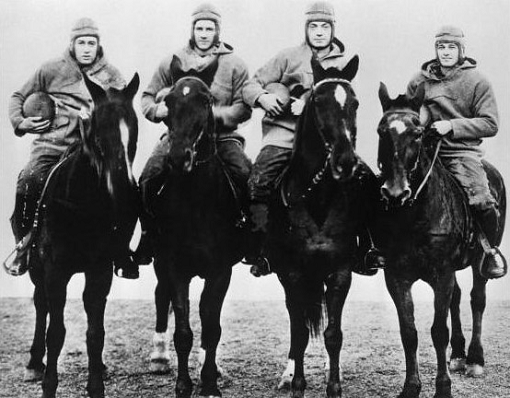
The most famous picture of the most famous backfield, who played for the most famous team in college football history. Left to right, the "Four Horsemen" of Notre Dame were halfback Don Miller, fullback Elmer Layden, halfback Jim Crowley, and quarterback Harry Stuhldreher. All but Miller were consensus All Americans this season (it took an even more legendary figure, Illinois halfback Red Grange, to prevent a clean sweep), and all four are in the Hall of Fame.
Thanks to that picture, Grantland Rice's "Four Horsemen" article, Notre Dame's subsequent unbeaten and untied season, and their rout of previously unbeaten Stanford in the Rose Bowl, this is the year that Notre Dame became NOTRE DAME. And for the first time since 1909, there is only one team to look at this season for the mythical national championship (MNC). And yet unlike Yale in 1909, Notre Dame is not quite a unanimous choice for the 1924 MNC-- too often we find a contrarian for even the slammingest of slam dunks.

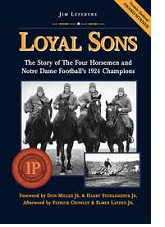
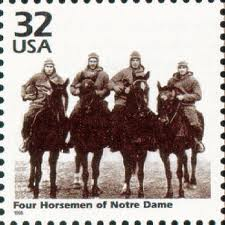
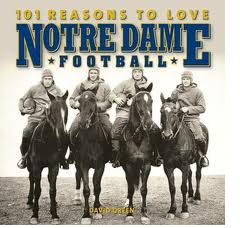
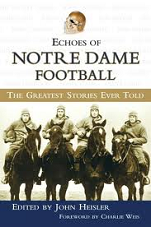
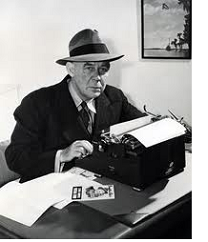 Notre Dame was
transformed from men to myth literally overnight, and in fact we can pinpoint the birthday of the myth
Notre Dame was
transformed from men to myth literally overnight, and in fact we can pinpoint the birthday of the myth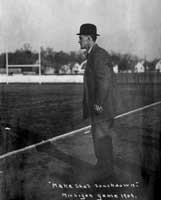 While
the myth was made overnight, the reality of Notre Dame's rise to their
first national championship was nearly 20 years in the making. They
first started consistently winning in 1906, going 6-1 that season and
6-0-1 the next, but they were a minor team playing mostly minor teams.
In 1908, they added Michigan, the region's biggest fish, to their
schedule and lost just 12-6, finishing 8-1. 1909 would be a
breakthrough season for Notre Dame, as they won 6-0 at Pittsburgh and
11-3 at Michigan in consecutive weeks. Notre Dame suffered a tie at
Marquette in their finale to finish 7-0-1, but their win over 6-1
Michigan left them the true "Champions of the West" for the first time.
While
the myth was made overnight, the reality of Notre Dame's rise to their
first national championship was nearly 20 years in the making. They
first started consistently winning in 1906, going 6-1 that season and
6-0-1 the next, but they were a minor team playing mostly minor teams.
In 1908, they added Michigan, the region's biggest fish, to their
schedule and lost just 12-6, finishing 8-1. 1909 would be a
breakthrough season for Notre Dame, as they won 6-0 at Pittsburgh and
11-3 at Michigan in consecutive weeks. Notre Dame suffered a tie at
Marquette in their finale to finish 7-0-1, but their win over 6-1
Michigan left them the true "Champions of the West" for the first time.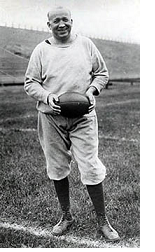 Notre
Dame went 4-1-1, 6-0-2, and 7-0 from 1910-1912, but without Michigan on
the schedule, they were back to being a minor team playing mostly minor
teams. Knute Rockne arrived on campus during this time, and as a
senior he was a star player for Notre Dame during their second
breakthrough season in 1913
Notre
Dame went 4-1-1, 6-0-2, and 7-0 from 1910-1912, but without Michigan on
the schedule, they were back to being a minor team playing mostly minor
teams. Knute Rockne arrived on campus during this time, and as a
senior he was a star player for Notre Dame during their second
breakthrough season in 1913
